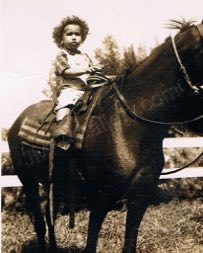
Sam Monet's Background:
Born in 1946, Sam Monet spent his early years on a small cattle ranch in the remote and blustery town of Waimea, situated on the Big Island of Hawaii. In this rustic setting, modern amenities like television and radio were absent, and electricity was limited. Evenings were filled with the melodious sounds of the Lindsey family, known for composing or playing Hawaiian music on guitars and an old stand-up piano. The family used traditional Hawaiian dance (hula) a creative method of communication, describing one’s feelings, thoughts, surroundings, location or events of the day in addition to English language. Sam’s grandparents conversed only in the Hawaiian language "olelo." The Lindsey family had a rich Hawaiian history of over 2,000 years, and "haole" heritage, including the arrival of the barkentine Don Quixote's captain from England in 1848.
Evolution:
As he grew older, Sam's adventurous spirit led him beyond the big island. He attended a private school on Oahu, engaged in surfing and sailboat racing, experimented with oil painting on canvas, and embraced the counterculture of the 1960s as a hippy flower child. He painted African masks on the exterior of his Volkswagen van and protested the Vietnam War.
European Odyssey:
Sam's passion for racing Swedish motorcycles paved the way for him to leave Hawaii through a student exchange program. He found himself at Lund University in Malmo, Sweden, a coastal town on the Baltic Sea. It was here that he was exposed to democratic social politics through encounters with expatriates and refugees fleeing Soviet persecution. This environment ignited a transformation in Sam's art, as he began to reflect his Hawaiian roots against the backdrop of a Sweden’s political institutions and icy winters.
Continental Exploration:
Sam embarked on an extensive journey, visiting various European cities. He traveled to London, where he purchased an old BSA touring motorcycle and rode it back to Malmo. In Stockholm, he drew inspiration from the city's rich culture, museums, and vibrant buildings in “old town”, leading him to experiment with poetry and paint landscapes of Stockholm’s clean air, streets and buildings, in stark contrast to London’s smog. His works were left with the Swedish family that sponsored him.
Parisian Artistry:
Sam eventually traded his motorcycle for an old VW van, which became his home during his first trip to Paris and beyond. The City of Light, with its monumental public art, left an indelible mark on him. He moved beyond landscapes, following in the footsteps of many young artists of his time by setting up his make shift easel on the steps of the Louvre. This was a time when security at the Louvre was lax, allowing anyone to approach the Mona Lisa closely.
While in Paris he assumed the “nom de plume” of Sam Ketch (as in the two masted sailboat used in long distance travel), where he meticulously copied the works of his favorite modern artists Picasso, Dali, and Klee. Sam joined with other followers of the existentialist turned socialist Jean-Paul Sartre protesting the Vietnam war. His art, techniques, life and thinking continued to evolve, with no regard for past, present or future. Some of his works were entrusted to a gallery in Paris, never to be seen again. The vast galleries, enormous paintings, and sculptures left him awestruck and fueled his desire to explore Europe, its political and social “tribes”.
Artistry in Marseille and Beyond:
Sam’s travels took him south to Marseille. There, he parked his van in the harbor and honed his artistic skills, creating paintings of local fishermen on improvised canvases. These paintings, some on cardboard, were confiscated by Turkish boarder guards when he drove from Turkey into Syria.
Sam drove along the southern French coast into Italy then south to Florence, where he marveled at Palladio's architectural perfection, Michelangelo’s and Donatello’s “David”. He stood in awe of the beauty and grandeur of Rome, feeling overwhelmed by the belief that he could never attain such artistic mastery. His journey continued. He took his car on a ferry from Brindisi to Corfu, driving on to Athens. Sam was shocked by the environmental degradation of mainland Greece after 3,000 years of human cultivation, war, famine and pestilence. To Sam, accustomed to the rich grass of Waimea, the eroded, denuded underlying rock bed of Greece, where only goats and donkeys could survive, was a stark contrast to Homer's descriptions of vast forests and wild animals.
Athens and the Middle East:
Athens left an indelible mark on Sam as he felt like he was journeying back in time. He enjoyed the simple lifestyle and food in 1969 Greece which had a "peasant" quality compared to Italy and France. Sam explored many of the islands and returned to the mainland, eventually driving to modern Marathon.
His travels continued as he drove his van north across the Bosphorus to Istanbul, where the Byzantine world seemed stagnant compared to the artistic vibrancy of Europe. At that time, he was unaware of the conflicts brewing in the Middle East. He drove south along the coast, passing through Turkey into Syria and on to Beirut, often called the "Paris of the Middle East." The civil war had not yet erupted, but tensions were mounting. His attempt to drive south into Israel was thwarted at the border, forcing him to return to Beirut, where he camped on the seashore for a while. Sam was amazed by the local artisans and engineers who used the simplest tools to create pottery, sculpture and renewable energy systems on the Sidon river.
While in Beirut, a city renowned for its trading of opportunities that was now approaching civil war, Sam purchased with dollars, valuable carpets and a flawless diamond that later appraised in America for over 100 times what he paid in Lebanon. The political and social situation deteriorated further, with Palestinian refugees fleeing conflict in the south and militias gaining control of parts of the city. It was time to leave.
The only option was to depart Beirut south to Egypt on a small, aging Russian freighter to Alexandria, with his VW van taking up the entire foredeck. Upon arriving in Alexandria, Sam visited the ancient Library and drove along the Nile to Cairo. He traded dollars for Egyptian pounds on the black market, providing him with enough funds to spend a week in the Cairo Hilton, recovering from dysentery, playing tennis, making repairs to his van, and restocking provisions. Sam had the opportunity to see Tutankhamun's treasures in the Cairo museum and climbed to the top of the Great Pyramid at Giza, where the vast expanse of the empty sand desert left an indelible impression.
A Profound Encounter in Cairo:
During his time in Cairo, Sam experienced an unexpected, brief and transformative meeting with Sister Emmanuelle, a Catholic nun renowned for her tireless efforts on behalf of the underprivileged "garbage" children of Cairo. She chose to live among these children and organized them into a recycling "company," generating funds from Cairo’s mountains of trash to provide education for the less fortunate.
Wet Application:
Sister Emmanuelle's presence and radiant spirit left an indelible impression on Sam, igniting his creative spark and inspiring a series of Christian religious-themed paintings. Some of these remarkable artworks can be found in the Nouveau Gallery.
This particular series, known for its "wet application" technique, involved the use of very thick oil on canvas. Sam approached these paintings with a unique process, beginning and completing each piece within a matter of hours. Unlike traditional painting methods, there was no pause to allow the paint to dry. Instead, Sam employed broad and bold strokes, enabling the thick layers of paint to intermingle and blend seamlessly, usually with only one brush in the entire process.
This technique resulted in a complete and immediate expression of his emotions, thoughts, and state of mind at that very moment. The paintings captured the essence of his profound encounter with Sister Emmanuelle and the deep spiritual impact it had on him, reflecting a powerful fusion of art and spirituality.
The civil war in Beirut was escalating, the cost of his van on a boat back to Greece was prohibitive, there was no turning back. Sam continued his journey, traveling to Tripoli along the ocean and across the desert to Marrakesh, then taking a ferry to Gibraltar.
Perspective on Islamic Art:
Sam had a genuine appreciation for the intricate beauty of Islamic carpets. However, he couldn't help but notice that Islamic art, characterized by its mathematical and repetitive patterns, often lacked what he considered the essence of true creativity—the human form.
During his travels, Sam was accompanied by female companions from his school days in Sweden. Witnessing the mistreatment and abuse of women in certain parts of the Muslim world deeply troubled him. This experience further shaped his perspective on life and his art.
Sam found the Spanish art scene somewhat stagnant in comparison to the dynamic creativity he had encountered in Paris. Sam departure from Spain, quickly driving north returning to his studies in Malmo.
Fortune's Favor:
Sam often recalled his maternal grandfather's wise words: "Sonny, sometimes it's better to be lucky than smart." In May 1971, a stroke of luck would play a pivotal role in Sam's life as he prepared to leave Frankfurt am Main and return to the United States.
At that time, there was considerable uncertainty in the U.S. dollar currency market. Sensing the potential risks, Sam decided to convert all his foreign currencies into Swiss francs, with the intention of later exchanging them for dollars upon his arrival in New York. Little did he know that his journey would become an extraordinary financial adventure.
As he went through the check-in process at Frankfurt airport, he noticed a perplexing situation. American tourists were struggling to use their U.S. credit cards or dollars to purchase tickets or board Pan American flights. The turbulence in the currency market, brought about by the Nixon currency emergency, had left them stranded.
Sam offered to exchange his Swiss currency, at a good profit, for dollars thus allowing the Americans to get on their flights. Once out of dollars, Sam cancelled his flight, took a train to Switzerland where he exchanged his dollars to franc and journeyed back to Frankfurt. After another round of exchange and a trip to a Swiss bank and back, Sam returned to America with considerably more money than he had when he left to go to school in Malmo, thus offsetting all of his costs and expenses for school and extensive travels.
Back in America:
Upon return to America, Sam bought a used El Camino in Detroit. He drove it cross country, stopping at national parks and enjoyed summer skiing on Mount Hood. In later years, Sam organized wilderness ski tours on Hawaii’s 14,000 foot Mauna Kea, which until recently, was blanketed in snow between December and February.
Return to Hawaii:
Sam returned to his cherished island home, with its warm waters, clear skies, and fertile soil. To support himself, he established a successful real estate brokerage and general contracting company. He channeled his creative talents into designing, building custom homes and furniture through his contracting business.
Palladio’s Perfect: The idea that a building must be functional, durable and beautiful to be perfect. Sam’s attempt to create perfect buildings was a frustrating concept because he knew his homes made of wood and cement could not endure 500 years in Hawaii’s tropical environment, and therefore could never be perfect. The pursuit of perfect was impossible for him to achieve.
More Education Abroad:
Sam returned to school in Sweden, subsequent trips to Europe and more overland travels to the middle east. His ability to navigate through troubled regions of Eurasia with relative ease drew the attention of the U.S. Government. They approached Sam with an offer to consider employment in the diplomatic corps. Instead he chose to stay in Hawaii.
The Birth of Trois Mademoiselle:
Trois Mademoiselle is an example of Sam's unique artistic creativity. While he was making resin repairs to his surfboard his thoughts went to Picasso. With leftover resin quickly “going off”, a piece of driftwood, and old wire clothes hangers in his shop, he fashioned this simple piece of art.
Semi Retirement:
In 1982, Sam chose early retirement to pursue his passion for painting, wind surfing, sailboat racing, aerobatic flying, and beach volleyball. His days of developing and selling Hawaiian lands to foreign investors were behind him. Sam expressed his creativity on his early Mac’s CADD software to design high speed foils (sails, daggerboards and rudders), hydroponic greenhouses, renewable energy systems, and writing HTML to express his concerns about global warming on the early World Wide Web. He posting sailing, hiking and travel videos on his YouTube channel.
Sam's Artistic Philosophy:
Sam firmly believes that to paint at the highest level, one must first master the techniques of the best. This entails exploring their creative minds, meticulously retracing every combination, stroke, smudge, and the nuanced touch of brush, blade or thumb on canvas. He draws inspiration from a diverse array of artists, each contributing a unique facet to this artistic journey and state of mind:
• Gaugin's Primitive Simplicity: The artists ability to capture the essence of simplicity in his work was a profound influence on Sam's approach to art.
• Van Gogh's Bold Colors: Van Gogh’s bold and vibrant color palette inspired Sam to experiment and evoke strong emotions.
• Picasso's Alternative View of Life: Picasso's innovative perspective on life and and reality encouraged Sam to explore unconventional angles and interpretations.
• Modigliani's Love of Female Form: This man’s deep appreciation for the female form guided Sam in his portrayal of this timeless subject.
• Klee's Lines with Meaning: Klee's used lines to convey meaning, thoughts and intention. Sam infused his own work with that linear perspective and significance.
• Dali's Bent Perceptions: Dali's exploration of altered perceptions and limitless mind encouraged Sam to challenge reality and push the boundaries of his creativity.
• Donatello’s “David”: Soft male, feminine pose became the inspiration for Sam’s wet application oil on canvas “Resurrection”, a better place, his dog by his side against a backdrop of flowers.
• The Italian Master, Da Vinci: The enduring genius of Da Vinci is a touchstone for Sam, a reminder of the timeless pursuit of artistic excellence.
Sam's meticulous reproduction of Da Vinci's iconic masterpiece, the Mona Lisa took three months and resulted in a captivating work of art, showcased at the Nouveau Gallery. Sam's dedication to mastering the techniques and insights of these legendary artists left an indelible mark on his own artistic journey.
Loss, Recovery and Love:
Unfortunately, in 1979, several of Sam's paintings were stolen. In 1988, the majority of his works were lost in a fire that destroyed most of his Wailea Bay home on the Big island. In 1988, he moved back to Oahu's north shore to enhance his windsurfing skills. In 2000, Sam met Kate Johnson, the love of his life, athlete and a fellow artist. Together, they shared adventures on their racing catamaran "DeathWish" and Tartan 10 sailboat “Koa Kai”, producing YouTube videos and sailing screen shots for sale in their galleries. Art cannot be separate from ones thoughts and environment. Sam’s new work and his writing is inspired by his philosophical and environmental concerns for Hawaii’s future.
Loss and Restoration of Art:
In 2021, a sinking houseboat irreparably damaged all of Sam's art collection. Fortunately, many of Kate's paintings survived. Through photo enhancement technology and low-cost, high-resolution printing on canvas, Sam has managed to resurrect some of his lost paintings in the Johnson - Monet Fine Arts Gallery collections. The photo galleries are all original art depicting the beauty of Hawaii’s unique environment and Sam and Kate’s love for sailing.
Sam and Kate's Art:
Sam and Kate invite you to explore, purchase, and enjoy their artwork in your home or office.
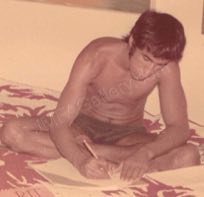
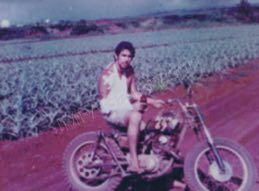
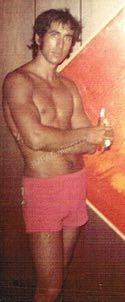
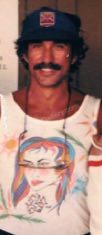
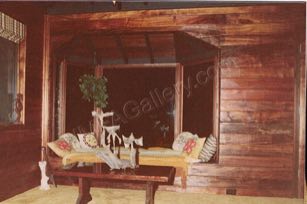

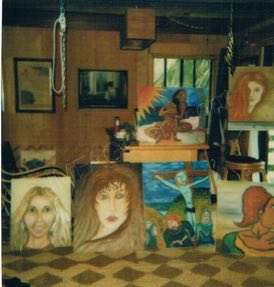
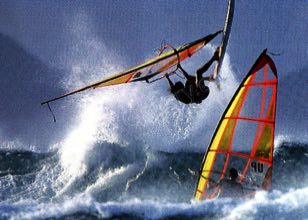
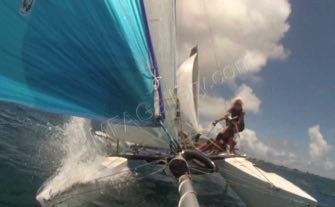
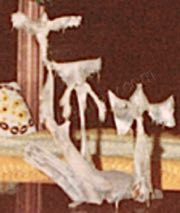

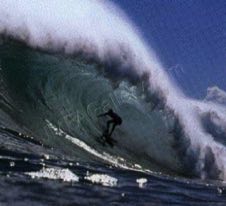
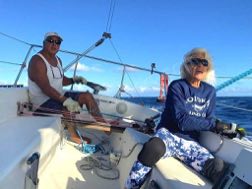
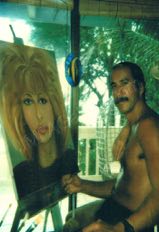

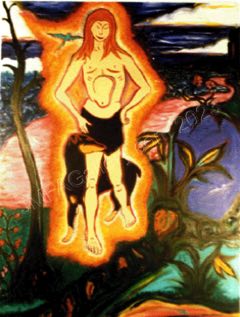
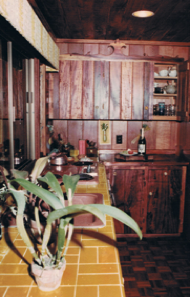
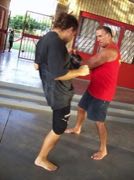

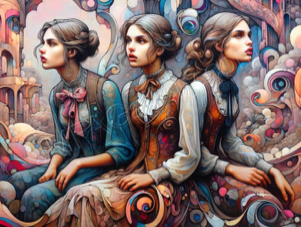
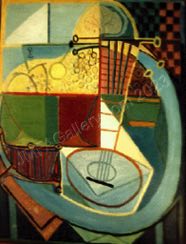
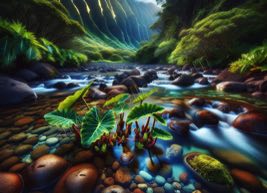
All Art and Images CopyRight
JM Fine Arts Gallery 2023